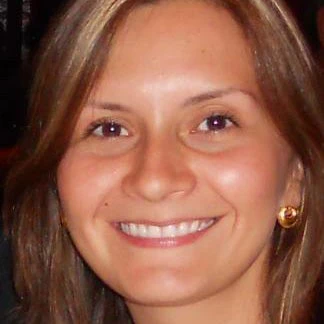 Equipo de trabajo realizando labores en empresa Textil: Ross Brazo Design. Dante Luza. Banco Mundial
Equipo de trabajo realizando labores en empresa Textil: Ross Brazo Design. Dante Luza. Banco Mundial
Although Peru reduced poverty from 59% in 2004 to 24% in 2013, there are still major challenges. An analysis of the current situation, based on the latest World Bank study “Rising strong: Peru Poverty and Equity Assessment", could be the point of departure for crafting new solutions for the main challenges and opportunities for the country. These are the 5 main topics:
1. Fragile growth.
In less than two decades, Peru went from booming economic growth to facing serious challenges in terms of inclusion, inequality, and vulnerabilities. Between 2004 and 2013, per capita income grew at an average rate of 6.6 % per annum. This boom period was supported by macroeconomic stability, adequate market regulation, and the opening up to global trade. However, after the fall in mineral prices, per capita growth fell to less than one third, and progress in poverty reduction slowed down. Good domestic conditions continued to be important, but were not sufficient to promote growth and people's well-being at the same pace.
2. High degree of vulnerability.
Seven out of every 10 Peruvians are living in poverty or at risk of falling into poverty. Of these seven, three are poor and four are at high risk of falling into poverty if faced with illness, a natural disaster, or job loss (Figure 1). Poor households earn less than $120 per month, far less than the $200 for the basic basket of goods, i.e. for Peruvian households to meet their basic needs. Furthermore, the monetary poverty rate is 7 to 8 percentage points higher among the indigenous and Afro-Peruvian population than among whites and mestizos.
Figure 1. Percentage of poor (US$6.85) and vulnerable persons (US$6.85–US$14.00), 2004–21

3. Persistent inequalities.
There is inequality in access to basic services and production resources between regions, as well as between town and country. For example, only 6 out of every 10 households has safe water and 3 out of 10 do not have basic sanitation . Almost 80% of rural homes do not have toilets that are connected to the public sewage system. In addition, only 38% of those living in poverty in cities have access to financial services, while the rate among those who are not poor is 55%.
4. Increase in vulnerability to falling into poverty.
Peru’s geographical location makes it particularly vulnerable to disasters. For example, the 2017 El Niño event affected 1.3 million Peruvians and generated losses of USD 3.1 billion. In addition, disasters impact rural and low-income households more severely, while urban and higher-income households are more affected by economic shocks, such as job loss. The districts of Ate, Comas, San Juan de Lurigancho, and San Martin de Porres in Lima have the highest concentrations of vulnerable people (1.2 million), followed by El Porvenir (Trujillo) on the north coast, and Cajamarca (Cajamarca) in the northern highlands, with more than 100,000 vulnerable people (Figure 2).
Figure 2. Vulnerability by district, 2021 (Percentage of the total population)

5. Informality.
Three out of every four workers are informal employees who are very vulnerable to crises , in enterprises with limited possibilities for innovating and incorporating technology, i.e. low productivity enterprises. This also impacts State revenues and limits improvements in the coverage and quality of health, education, social protection, and other public services that are essential for providing social welfare, especially to the most vulnerable.
How can social advances be strengthened?
Social advances in recent decades have been fragile. In order to strengthen them, social protection, basic services, and the productive capacity of persons living in poverty and vulnerability must be strengthened. To this end, it would be useful to:
- Remove the obstacles that prevent enterprises from growing and workers from becoming regularized in order to boost productivity.
- Focus growth on sectors with potential. Agriculture, forestry, and tourism are examples of areas that could drive the country's development.
- Adapt work and economic activities to climate change. For example, the zero carbon transition involves adjusting workers’ skills and capacities to enable them to participate in sectors, such as renewable energy and sustainable tourism.
- Strengthen resilient policies. Policies that not only reduce poverty and vulnerability, but also provide economic opportunities for all, and improve resilience to shocks, are essential.
- Understand the problem at the local level. Recognizing regional specificities and differences in levels of exposure to environmental stress factors is essential for the development of effective interventions.
- Accelerate the accumulation of production resources. Initial efforts should focus on closing the infrastructure gap in connectivity, technology, health, and education.
Peru, with its tremendous wealth and potential, is facing a major challenge: inequality and poverty. Each piece of data is not just a number, but a life, a dream, a hope, and a reminder that we all have a role in the building of a country of equality.


Join the Conversation